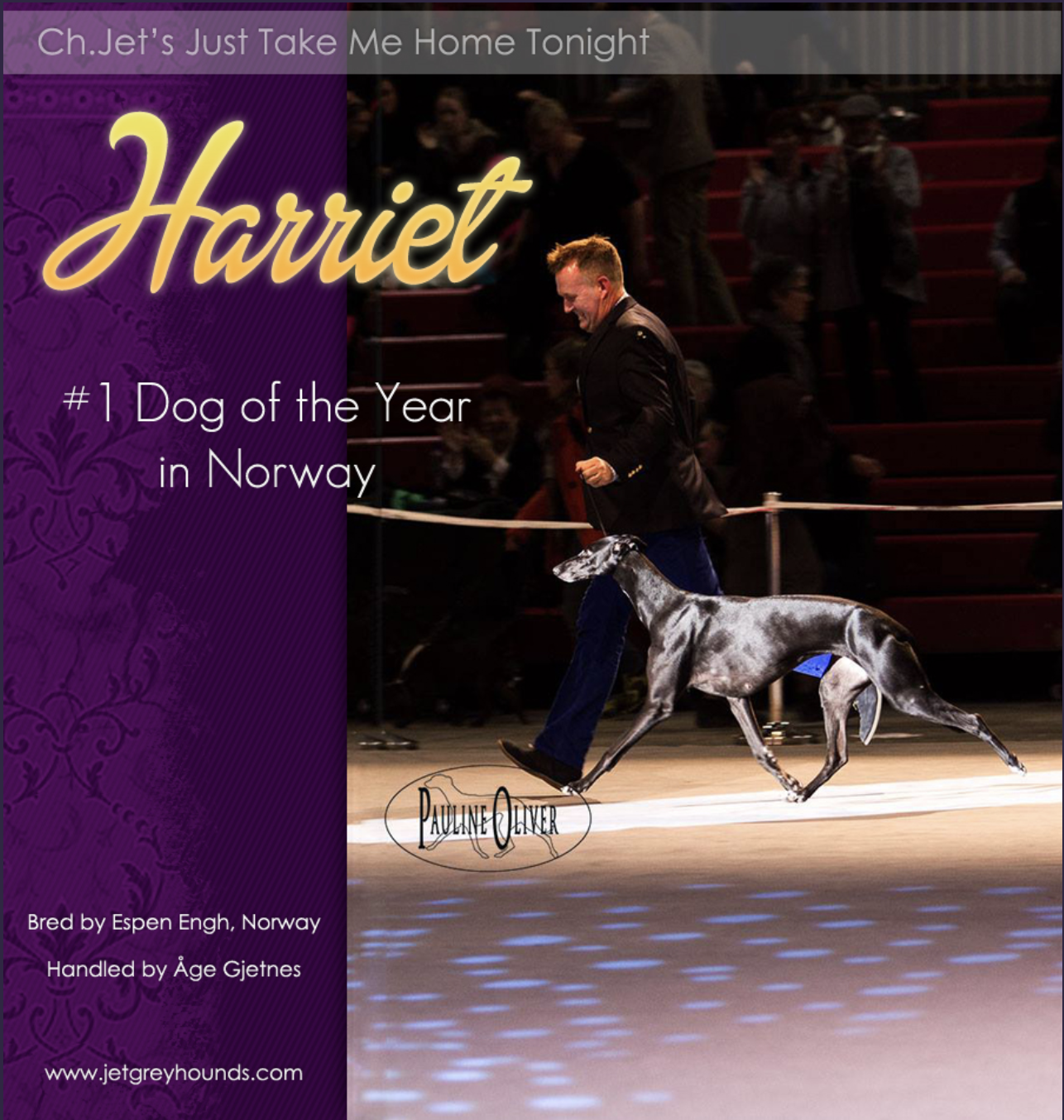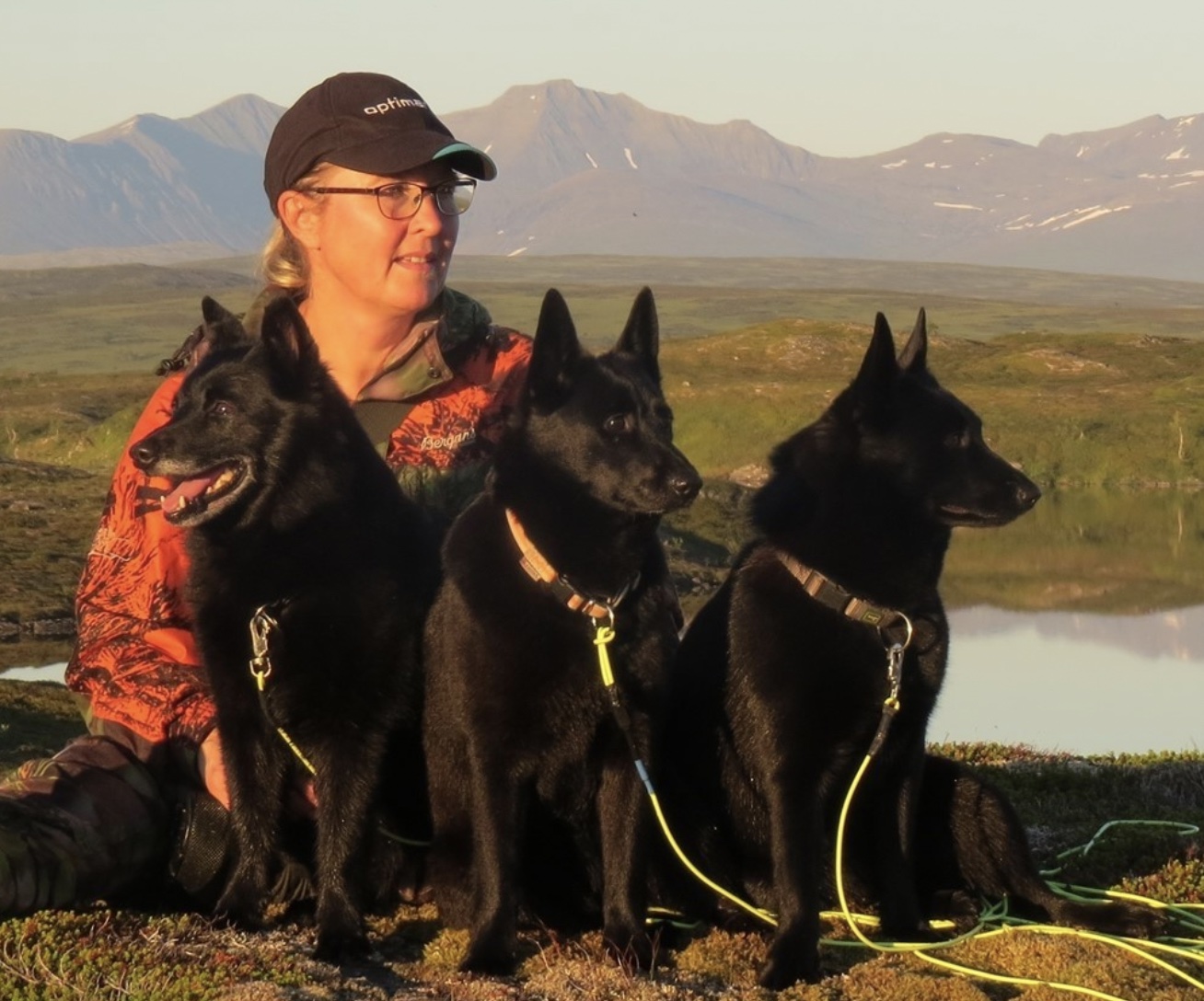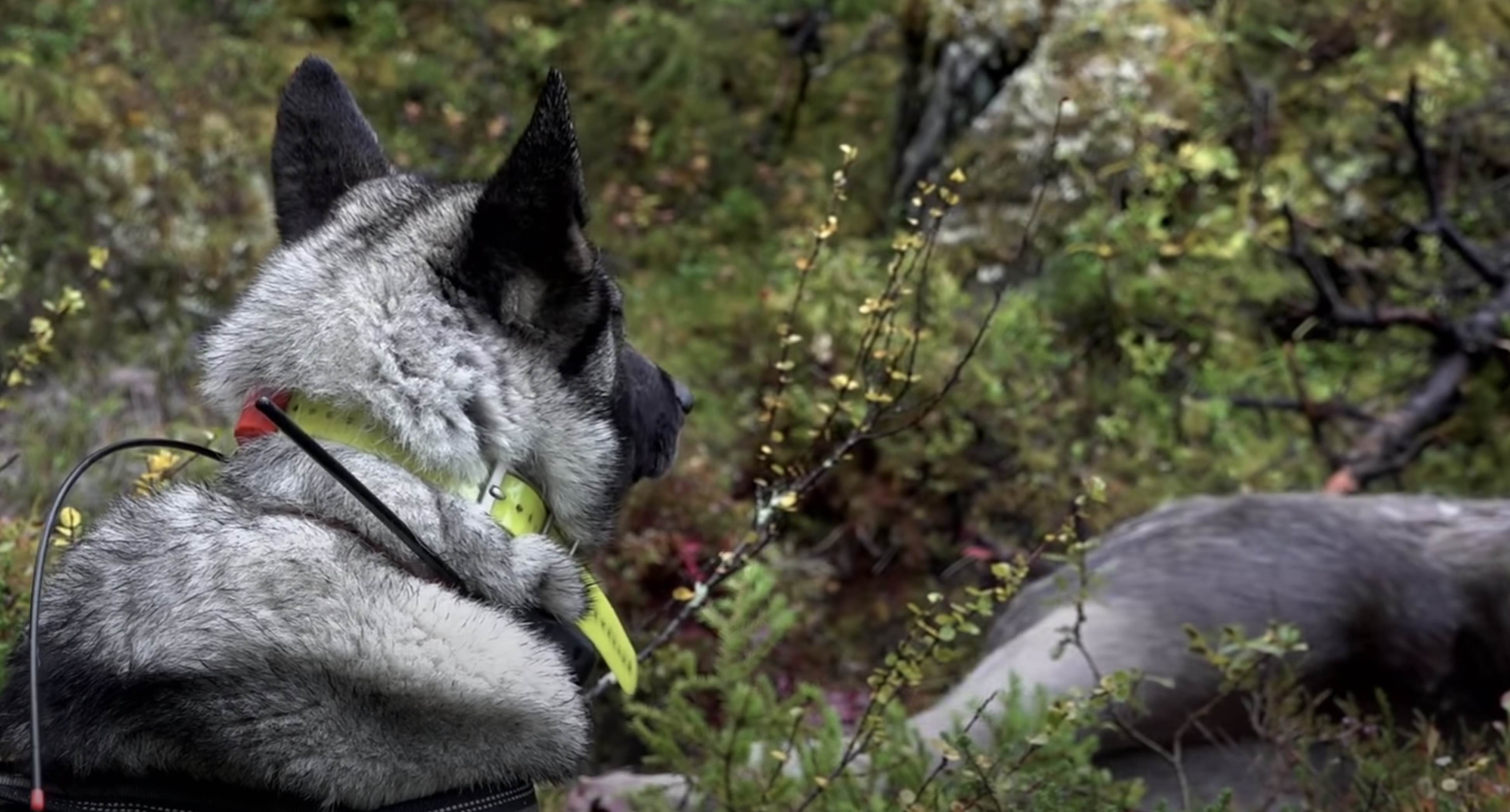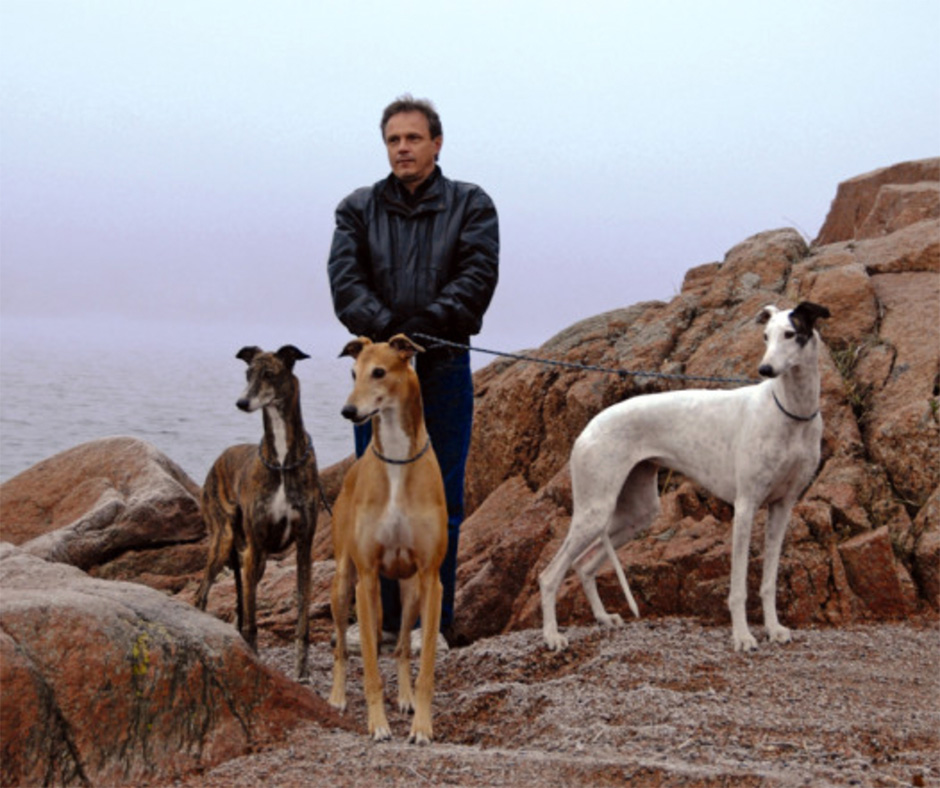641 – Espen Engh on Greyhounds and Judging
Espen Engh on Greyhounds and Judging
Host Laura Reeves is joined from Norway by famed breeder and judge Espen Engh of Jet’s Greyhounds for a two part conversation about Greyhounds, judging, breeding and why the Scandinavian dogs are so consistent in quality.

Int. Ch. Jet’s Elegant Negress, Engh’s first Best in Show winner from his first litter.
“I kind of inherited the interest for dogs in general and Greyhounds in particular because my mother started up with a Greyhound in 1955 so she was the source of everything,” Engh said. “She got her own mother hooked on the Greyhounds as well. So I’m a third generation Greyhound fancier and lover.
“My mother was only a teenager when she started out. She was very quickly bitten by the bug and started showing her first Greyhound all over Scandinavia. She didn’t breed, however, she didn’t have the possibility to do that. So my mother and I started breeding Greyhounds, 20 years after she got her first one, in 1975. And although my mother is no more with us, I keep reading from the same strain, actually from the same bitch line that was started in the early ‘70s.
“There are many things that make the Greyhounds unique. And one of them is their long, long, long history and the amount of generations that have gone into breeding greyhounds. I’m quite sure that the Greyhound is the only breed where you can actually trace the pedigrees back to the 1700s.
“(The first description of the Greyhound as having the “head of a snake, the neck of a drake”) is from a poem that was attributed to a woman called Juliana Burners more than 500 years ago.

Ad for one of Engh’s multiple BIS winning Greyhounds.
Actually, she didn’t exist. So it’s somebody else wrote it. But that you could say is kind of the first Greyhound standard, because it describes the Greyhound, the head, the neck, the feet in a poem. Greyhounds are a very sophisticated breed. They are very close to their owners. They are about a combination of substance with elegance.”
Engh has been invited to judge at the highest levels worldwide.
“It certainly is a privilege. It’s certainly something very enjoyable to be able to travel around, somebody else picking up your bill, to enjoy looking at dogs, feasting your eye on dogs, getting that little tear in your eye every now and then, maybe a goose bumps every now and then too, which is really one of the reasons for doing it.
“But it does also present some challenges and some difficulties. Some breeds do have very different breed standards and that can certainly pose some difficulties. Other breeds, actually the breed standards themselves are not that different, but the development of the breeds are. So they have developed in quite different directions.
“Obviously, and I think we need to state that from the beginning, if you are willing and able and do undertake judging a breed in a foreign country, you have to respect the breed standard in that country. I mean, that should go without saying, but it doesn’t always.”
599 – Norwegian Elkhounds: The OG GPS Tracking System
Norwegian Elkhounds: The OG GPS Tracking System

Kamilla Engen with her dogs. In Norway, Grey and Black Norwegian Elkhounds are recognized as separate breeds.
Kamilla Engen, Norwegian Elkhound breeder, judge and moose hunter in Norway, joins host Laura Reeves for a Love the Breeds discussion of this ancient hunting breed. Engen judged the breed’s US National Specialty in May.
Per the Norwegian Elkhound Club of America, The Norwegian Elkhound is bold and energetic, a hardy gray hunting dog known for his lush silver-gray coat and dignified but friendly demeanor.
In appearance, a typical northern dog of medium size and substance, square in profile, close coupled and balanced in proportions. The head is broad with prick ears, and the tail is tightly curled and carried over the back. The distinctive gray coat is dense and smooth lying.
As a hunter, the Norwegian Elkhound has the courage, agility and stamina to hold moose and other big game at bay by barking and dodging attack, and the endurance to track for long hours in all weather over rough and varied terrain.
The durable Elkhound is among Europe’s oldest dogs. They sailed with the Vikings and figure in Norse art and legend.
You Get the Dog You Deserve
“(These are) excellent family dogs,” Engen said. “We also enjoy our nature. And it’s the perfect companionship if you are hiking, going in the mountain. I always walk my dogs and so they are good off leash. I always said that you get the dog that you deserve. If you want the dog to get back to you, you have to start with that. It’s a training. Of course. But if you start early and make it positive to come back to you, yeah, of course (they come when called). Because the ability that makes it an enormously great hunter is the ability to cooperate with the hunter.
“We have two kinds of forums of hunting that use these dogs. The one is the most usual is loose. You let the dog loose and you have a GPS tracker on it so you can see where it is and you can also see when it stands still and you can hear the barking. Then you have contact with a moose.

This Norwegian Elkhound tracked down a wounded moose that was hit by a car so it could be humanely dispatched.
“The other one is with a very long leash, 5-6 meters. And let me just explain a little bit why we do that in Norway. Norway is a tiny country compared to the United States and we have distinct areas that we are allowed to hunt. In these areas you can hunt a certain number of mooses. OK and these dogs? They run far. And the and a moose doesn’t always stop (in the confined area). So, if you have small areas, it’s very helpful to have a leash because then you can control it a lot more and you can search a whole area.
“They locate the moose from a quite a long distance. They are incredible, their ability to do this. Then they located, they run over to it and hopefully they are able to get the moose to turn around towards them. To defend themselves. This is an old, old instinct that moose have from wolves and bears. And then the dog barks. From old times before the GPS trackers, the hunter hears that noise. And that was their GPS.”

